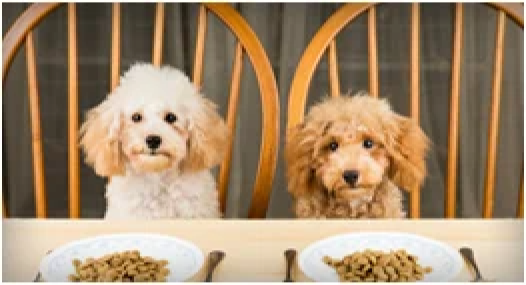Last Updated: 07/05/2025
How Dry Pet Food is Made
Have you wondered how dry food in made? Read more from our vet team about the manufacturing process of kibble and safety measures to protect your pet.
Author: Dr Teagan Lever BVSc (Hons)
Reading Time: 2 minutes - short read

When Teagan's not busy sharing her knowledge of all things pets as Pet Circle's resident vet, she is the human companion of two intense English staffies and a three-legged cat named Steve.

Wet dog foods vs dry dog foods - which is the best?
Have you ever wondered how the ingredients that you see listed on the bag of your pet's food end up as the convenient dry kibble inside? Most modern dry dog and cat foods are manufactured using a process called extrusion, resulting in a dry kibble that has a much longer shelf life than the raw ingredients used to make it.
The Manufacturing Process

Prior to being extruded, in the first step of the manufacturing process the primary ingredients are pulverised and mixed together to form a consistent dough. This dough is then fed through a machine called an expander, which cooks the dough using pressurised steam or hot water, exposing it to very high temperatures and pressures. While the dough is still being compacted by the extreme pressure from the expander, it is forced through specially shaped and sized holes called dies, with the continuous stream of dough being cut at intervals by a knife to form individual kibble. Depending on the product being manufactured, different dies are used to make various different kibble shapes and sizes.
After being extruded, the resulting kibble is then passed through a hot air dryer to draw out any leftover moisture. Then, once it has dried and cooled sufficiently, the kibble is sprayed with a mixture of oils, fats, vitamins, minerals and any other ingredients that would otherwise have been removed or altered by the high temperatures of the manufacturing process. The finished product is then sealed into airtight packages to keep it fresh and prevent any spoilage.
Safety Measures
High quality and premium pet food brands take the quality and safety of their products very seriously.
Good pet food producers will undertake a number of steps before, during and after the manufacturing process including:

Testing and examination of primary ingredients for signs of harmful microorganisms, chemicals, foreign objects and other potential contaminants.

Constant checks at various points in the manufacturing process to ensure quality and safety standards are being adhered to.

Examination and testing of the finished product to ensure that it is safe, consistent and meets quality standards.
So Why Choose Dry Food for Your Pet?
While canned foods can make a great compliment to your pet's diet, they have a much higher water content than dry food and so much more is needed to meet your pet's daily nutritional requirements if fed exclusively. Feeding your pet a high quality dry food is a convenient and much more economical way to ensure that they are receiving a complete and balanced meal with all the nutrition they need for a long and healthy life. Whether you are looking for a premium scientific formula or a natural, grain free alternative diet, there are a wealth of high quality dry foods available to suit the unique nutritional needs of every pet.
This article describes the standard process of making dry kibble, some manufacturers may use varied techniques to produce their unique products.